To adjust the lighting parameters at a distance, using a light switch with a remote control, specialized radio signal transmitters are built into the power grid. The latter exchange data packets with the remote control, which include codes responsible for a specific command. To increase the reliability, the level of responsiveness of the remote means, the information is transmitted sequentially several times.
Each remote light switch with remote control has its own unique address. In other words, individual signal radio transmitters respond only to commands given from a control means fixed in memory.
Functionality
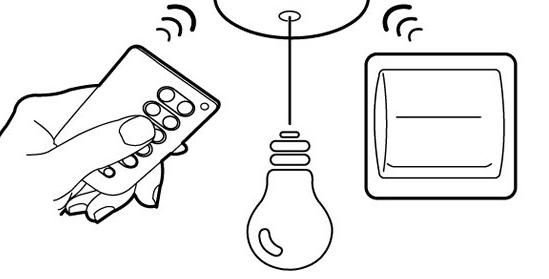 The basic skills that a remote light switch with a remote control has include activating and turning off chandeliers from a distance. Thus, to control the main lighting, the user does not have to get out of bed or get up from the workplace.
The basic skills that a remote light switch with a remote control has include activating and turning off chandeliers from a distance. Thus, to control the main lighting, the user does not have to get out of bed or get up from the workplace.
Modern electronics is able to control individual segments of chandeliers. Such an opportunity becomes useful, for example, if it is necessary to dim the light while going to bed or if there is a need to create too bright lighting.
A remote light switch with a remote control is capable of dimming or increasing the brightness level of all light sources that are connected to the chandelier's electrical circuit. That is, the user gets the opportunity at any time to change the saturation of the lighting in the room at will.
What other features besides making and breaking the electrical circuit of lighting fixtures does the wireless remote control have? The light switch with built-in dimmer allows you to remember all kinds of settings, which helps to create a particular atmosphere in the room at the touch of a button.
To save the user from having to search for a lost remote control, most devices are equipped with light and sound alarms that can be activated upon contact with the wall radio signal transmitter.
Characteristics
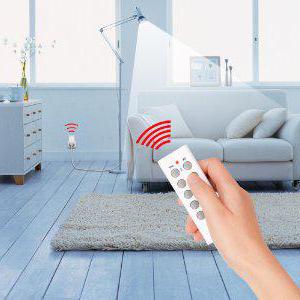 A standard remote light switch with a 220V remote control has the following technical characteristics:
A standard remote light switch with a 220V remote control has the following technical characteristics:
- power - about 10 mW;
- frequency - from 430 to 870 MHz;
- operating range - in the range from 30 to 500 m;
- switched power - at the level from 200 W to 5 kW.
When choosing a suitable means for remote control of lighting parameters, it is extremely important to pay attention to the ratio of the power of the transmitter and receiver of the signal. It is from this characteristic that the performance and level of responsiveness of the system depends.
Advantages
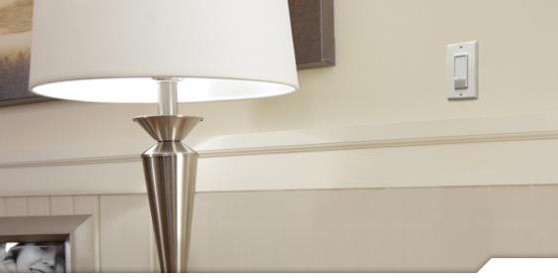 Using a remote light switch with a remote control, the photo of which is presented in this material, the user receives the following benefits:
Using a remote light switch with a remote control, the photo of which is presented in this material, the user receives the following benefits:
- It becomes possible to combine all lighting elements into a single system.
- When connected, there is no need to install additional wiring.
- The overall comfort of controlling lighting sources is increased, in particular for people with disabilities.
- Installation is not particularly difficult.
- If necessary, you can upgrade the installed system.
- Increases the safety of lighting fixtures in the room.
Flaws
Along with the obvious advantages, the use of remote control has some disadvantages. First of all, it is worth noting the rather high cost of most functional systems.
Using a remote light switch with an outdoor remote control, you will have to put up with the limited possibilities of its use inside the house. Ultimately, the radio signals that come from the remote control negatively affect the functioning of the communication lines that are close to the object.
Smartphone control
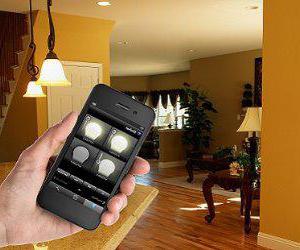 There are lighting remote control systems that allow data transmitters to be synchronized with mobile devices. In this case, the smartphone will play the same role as the remote control. However, by controlling the functions from the display, the overall usability of the system will be greatly improved.
There are lighting remote control systems that allow data transmitters to be synchronized with mobile devices. In this case, the smartphone will play the same role as the remote control. However, by controlling the functions from the display, the overall usability of the system will be greatly improved.
Special applications may be downloaded to the mobile phone. Thus, relying on a regular smartphone, the user gets the opportunity not only to turn off and turn on the lighting, but also to adjust the intensity of individual light sources. Usually, the transmission of commands occurs by sending a signal to the radio receiver in the form of encoded text messages.
Connection
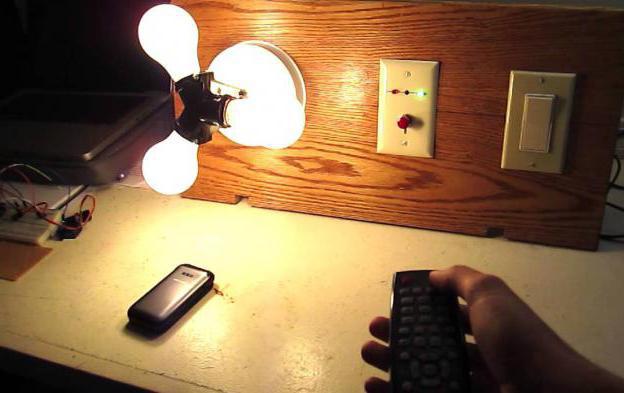 The principle of connecting a light remote control element differs, based on the type of light sources for which it is intended. If you have to work with a system that interacts with standard incandescent lamps, installation will take place in the same way as connecting a conventional switch.
The principle of connecting a light remote control element differs, based on the type of light sources for which it is intended. If you have to work with a system that interacts with standard incandescent lamps, installation will take place in the same way as connecting a conventional switch.
The bulk of remote lighting controls work with LED and energy-saving lamps. Connection here has its own nuances. To ensure the safe, correct operation of the system, you will need the organization of good nutrition. A mandatory requirement is the presence of a phase and zero. Such remote switches are mounted in close proximity to the light source.
For the yard and garden, the most powerful radio-controlled remote devices are used, which make it possible to control lighting at a distance of about 100 m. The latter, most often, support work with various types of lamps. To control LED lighting elements in controllers, the output stages must be made in the form of semiconductor transistors.
If we talk about remote systems, where control is carried out not only with the remote control, but also with voice commands, their connection is possible in place of the old standard switches with an additional power wire.
DIY remote light switch with remote control
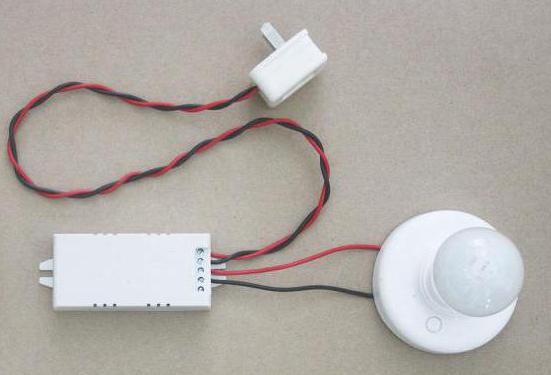 The task of personally organizing a lighting control system both from a switch and via a radio channel is doable, but quite complicated. The project will require the following:
The task of personally organizing a lighting control system both from a switch and via a radio channel is doable, but quite complicated. The project will require the following:
- a set of radio transmitters MP325M;
- PW1245 brand power supplies;
- one-button switch without contact closure fixation.
For starters, the section of the circuit on which the modification will be carried out is de-energized. The first step is to remove the standard switch. interconnected and then isolated.
One of the radio transmitters is disassembled. Pieces of wire are soldered to. The resulting contacts are cleaned and connected to the contacts of the switch.
If the housing is equipped with stretch ceilings, the designed modules can be hidden in the space between the panels. In the absence of such an opportunity, the system units should be placed in the ceiling niche, having previously isolated the power source and the receiver module.
After completing the above tasks, you can switch to lighting control from a wireless remote control or use a standard manual switch. If after some time the system stops functioning, do not panic. To restore functionality, it will be enough to replace the transmitter battery.
Finally
Remote control of lighting sources is first of all practicality, convenience and a tribute to modernity. It is enough to install the simplest system for adjusting the light, and the problem of changing it, turning it on and off at a distance forever ceases to worry the owners of the home.
The most rational installation of a remote lighting control system looks when arranging country houses, which are distinguished by an impressive number of rooms, utility rooms, and a spacious backyard.
Only a small controller makes it possible to control large-scale lighting systems. Therefore, it is not surprising that remote switches are increasingly being used in enterprises where there is a need to control light sources in vast areas under their control.
